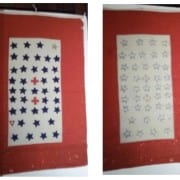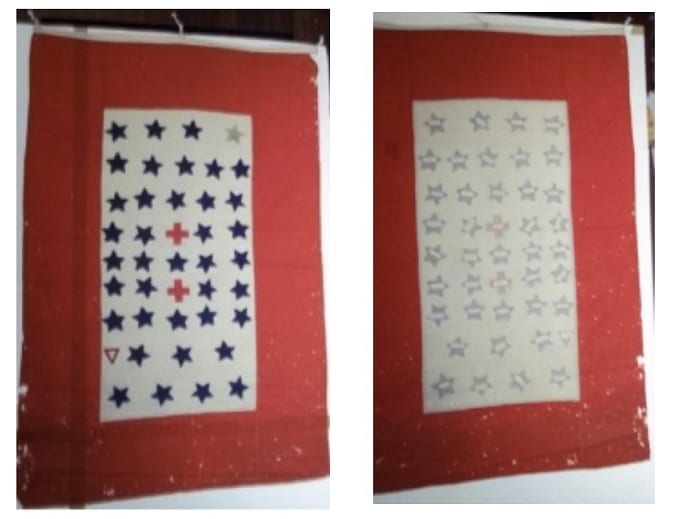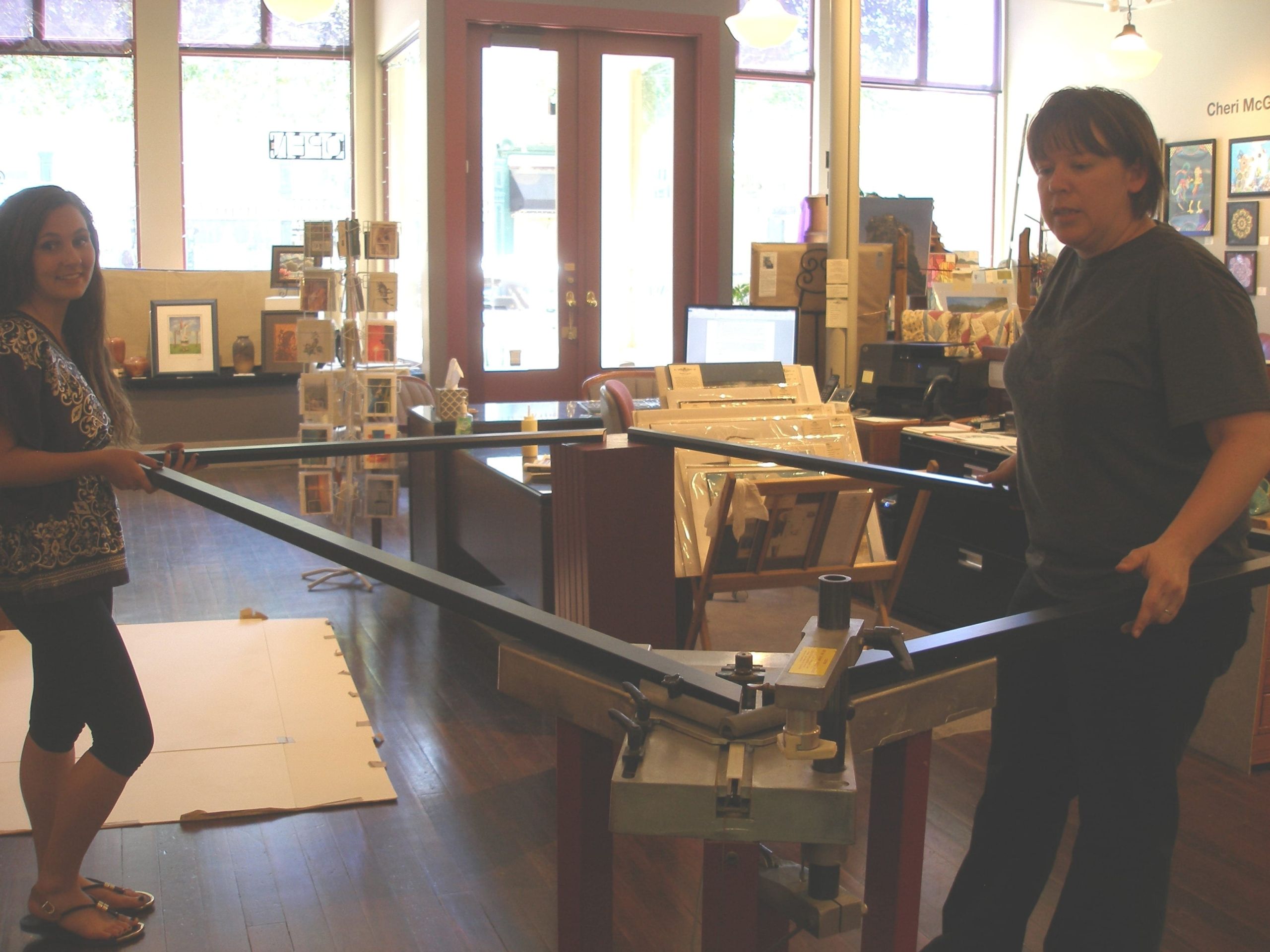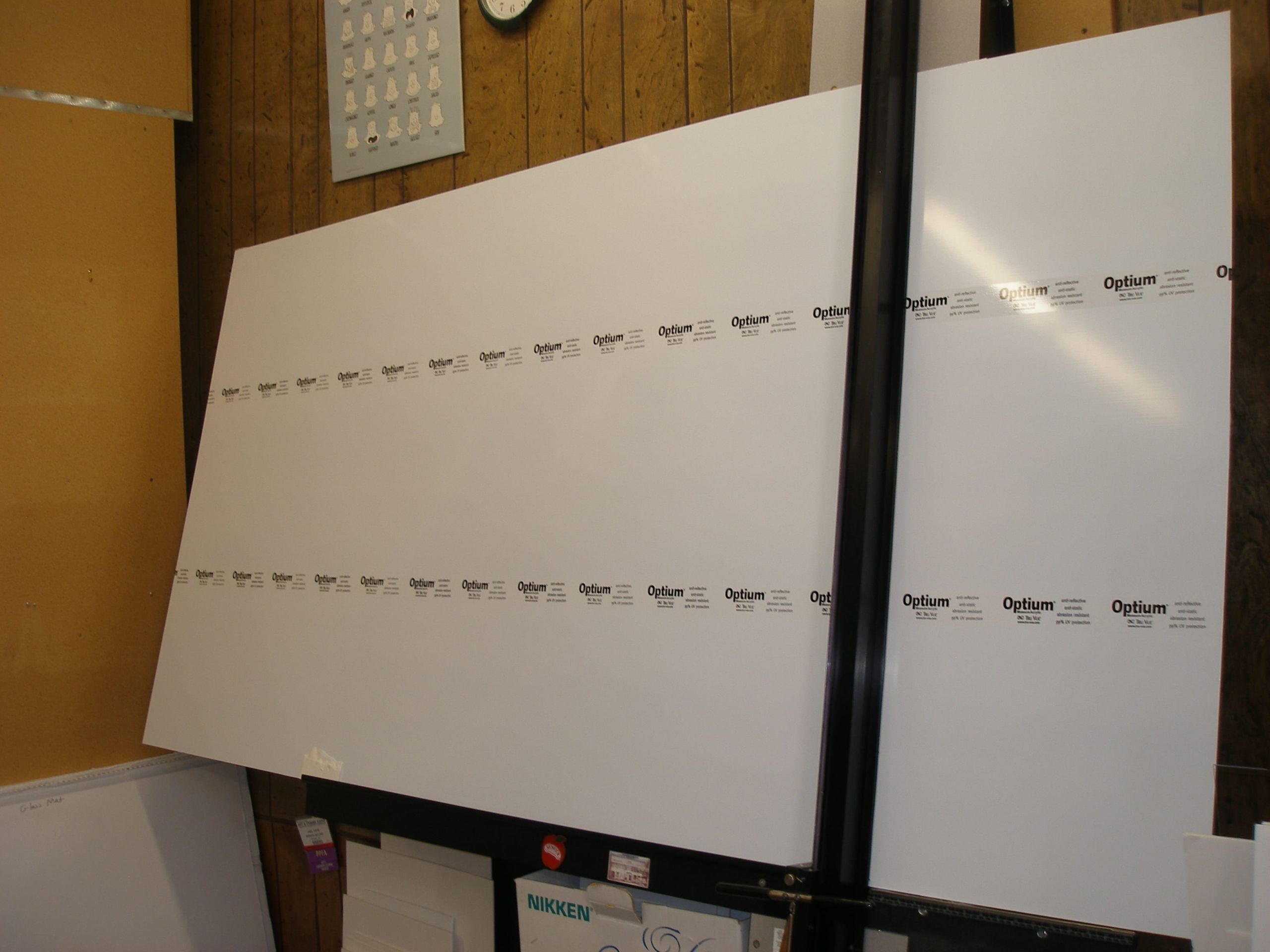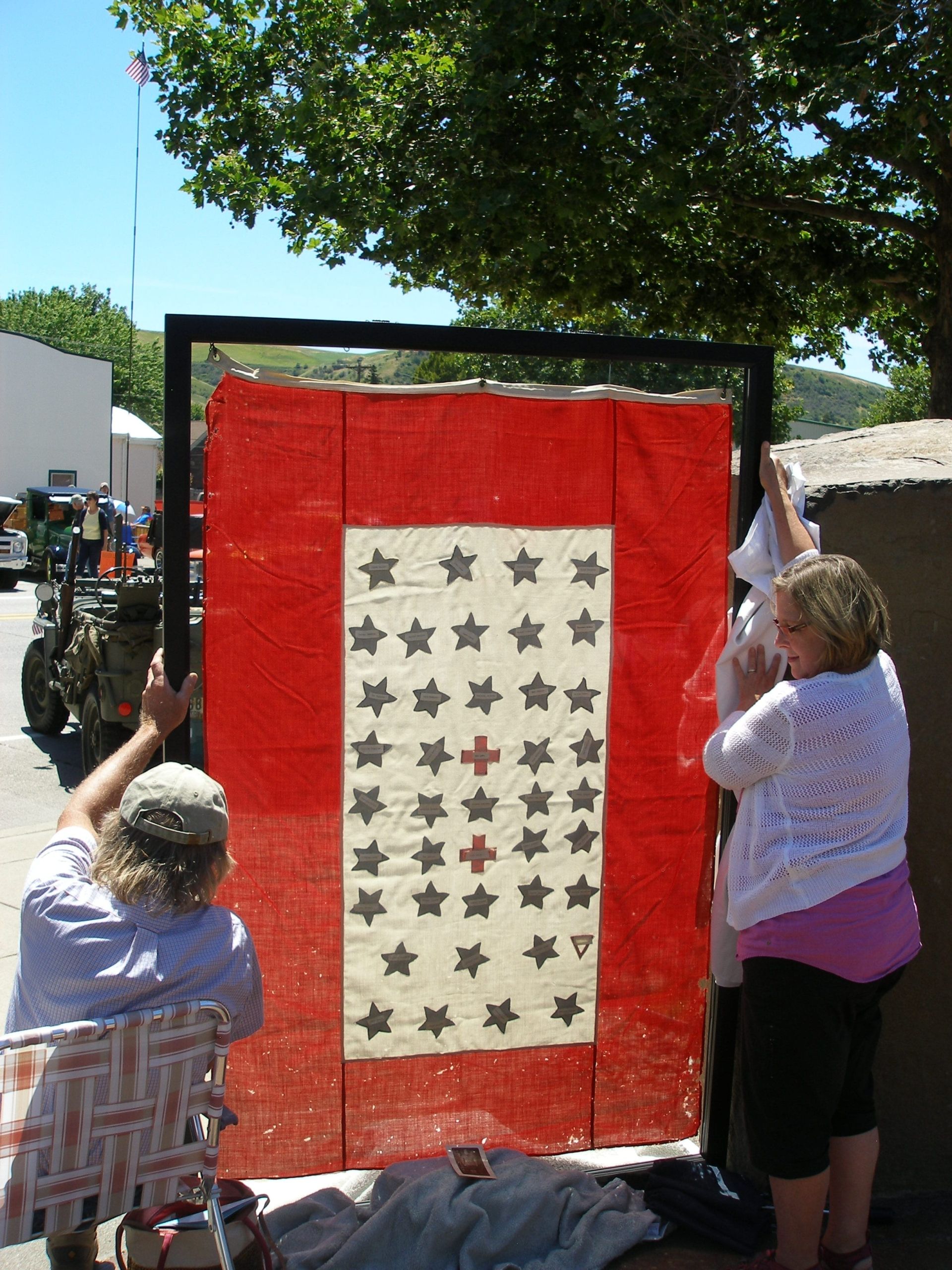Men Die, But History Lives — The Books of Kevin Carson
It’s been called The Great War and The War to End All Wars.
Those accustomed to learning history from Hollywood movies might guess the event to be World War II, but that one is known as The Good War. Our war in question is World War I, which could understandably be called The Forgotten War if the appellation weren’t already taken by the Korean War (brought out of obscurity by the T.V. show, M*A*S*H).
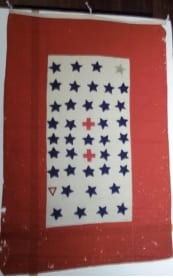
The Dayton Congregational Church’s World War I Service Banner honors men of the area who fought in the war.
But all wars are memorable to the people who fought in them, as well as to the survivors of those who died, military or civilians. For Kevin Carson, a former Dayton resident who researches Pacific Northwest history, World War I hits close to home.
“I have always been interested in World War I,” Carson says. “As a young person, I saw it through the eyes of my grandfather, Art Carson, who had lost his brother (Fred Carson) in the Meuse Argonne campaign.
“It was still as painful for him as it was on the day that Fred died.”
Fred’s name and memory are memorialized on a World War I Service Banner, found stuffed in the attic of the Dayton Congregational Church, and later framed for display and presentation. In all, 42 names are listed, representing those associated with just that church who were sent overseas. Many others from Dayton served as well, members of the 91st, or Wild West Division, encompassing soldiers from Washington, Idaho, Oregon, and Wyoming.
It is this group men upon which Carson focuses in his upcoming book, The Wild West Boys, from which he will be reading excerpts during an appearance at Wenaha Gallery over Dayton’s Alumni Weekend, July 16. At the forefront of hard fighting in France and Belgium, the 91st Division was part of the Meuse Argonne Offensive, one of the largest campaigns in military history and instrumental to bringing the war to its end. The Offensive involved 1.2 million U.S. soldiers, of which more than 26,000 died and 95,000 were wounded.
Thirteen Dayton men, Carson reports, received French memorial decorations for their part of the Offensive. All 13 men, including Carson’s great uncle, died in combat.
“I think this group of men needs to be recognized for what they did during their big push in the Meuse Argonne and then their brave dash through Flanders to liberate Belgium and flank the German Army,” Carson says.
“The mystique of these men spoke to me. I thought that perhaps I could write a historical fiction piece that has a western feel at its core, and highlights what these tough and brave soldier did.
“It seems their history is little known. I mean to change that.”

Two Scrapers from the Palouse Indians, a people who lived in the area long, long before The Great War, The Good War, or the Forgotten War. From the private collection of Kevin Carson
Highlighting history, and rescuing from obscurity information that remains pertinent today, is a passion with Carson, whose earlier book, History Book Club selection The Long Journey of the Nez Perce, features hand-drawn maps by the author to illustrate battles that many in the area have no idea of happening. With scrupulous attention to research and a painstaking sense of fairness, Carson looks at the “last of the Indian wars” from both sides, telling the story, according to Washington State Magazine, “with immediacy and fascinating analysis.”
The Wild West Boys, Carson explains, is also the result of extensive research and analysis, set in a fictional, yet realistic setting. Composites of actual soldiers that Carson has researched, the characters are drawn from real men with very real lives — such as the George Young cattle rustling gang that menaced Southeast Washington in the late 19th century, and the understaffed lawmen who doggedly pursued them. It was a genuine Western tale, long before John Wayne or Clint Eastwood.
In addition to reading from his book, Carson brings historical and area-based artifacts from his private collection, including World War I photographs, letters and flag, as well as Palouse Indian arrowheads, hide scrapers, a handwoven basket dating from the 1880s, and a frog effigy and paint pot from Celilo. They are all part of the history that makes up our lives today, and which he seeks to keep alive through his books.
“The themes that are interwoven through my stories have a lot to do with the importance of family, and the role of older men in helping shape young men,” Carson says. His work records the timeless story of sacrifice, love, and the limits of courage, because these are subjects that should never be forgotten.
Or, as one of his principal characters of The Wild West Boys writes,
“I do not believe that the stories of our lives should die with us.”
 Kevin Carson is the featured Pacific Northwest Art Event artist from Tuesday, July 5 through Saturday, August 6. Carson, a 1976 Dayton High School grad, will be signing books at the gallery Saturday, July 16, from 10:30 a.m. to 2 p.m. during Dayton’s Alumni Weekend. He will be reading from his new book, The Wild West Boys, at 1 p.m. Photos from World War I will be on display, the sale of which will benefit the Blue Mountain Historical Society of Dayton.
Kevin Carson is the featured Pacific Northwest Art Event artist from Tuesday, July 5 through Saturday, August 6. Carson, a 1976 Dayton High School grad, will be signing books at the gallery Saturday, July 16, from 10:30 a.m. to 2 p.m. during Dayton’s Alumni Weekend. He will be reading from his new book, The Wild West Boys, at 1 p.m. Photos from World War I will be on display, the sale of which will benefit the Blue Mountain Historical Society of Dayton.
Contact the gallery, located at 219 East Main Street, Dayton, WA, by phone at 509.382.2124 or e-mail art@wenaha.com. Gallery hours are 9 a.m. to 6 p.m. from Monday through Saturday, and by appointment. Visit the Wenaha Gallery website online at www.wenaha.com.
Wenaha Gallery is your destination location for Greenwich Workshop Fine Art Prints, professional customized framing, and original fine art paintings and sculpture by notable Pacific Northwest artists. Books, gifts, note cards, jigsaw puzzles, and more are also available. Visit at 219 East Main, Dayton, WA.
This article was written by Carolyn Henderson.




